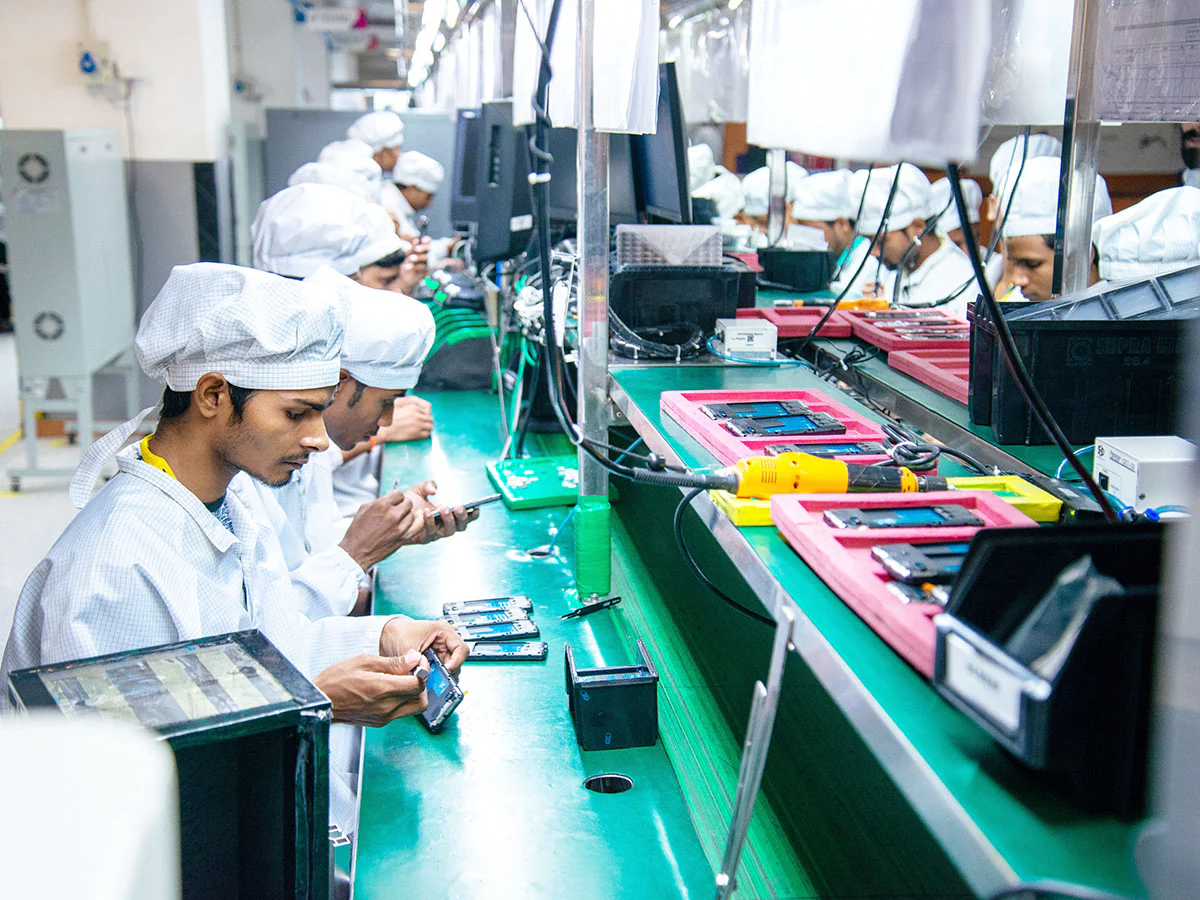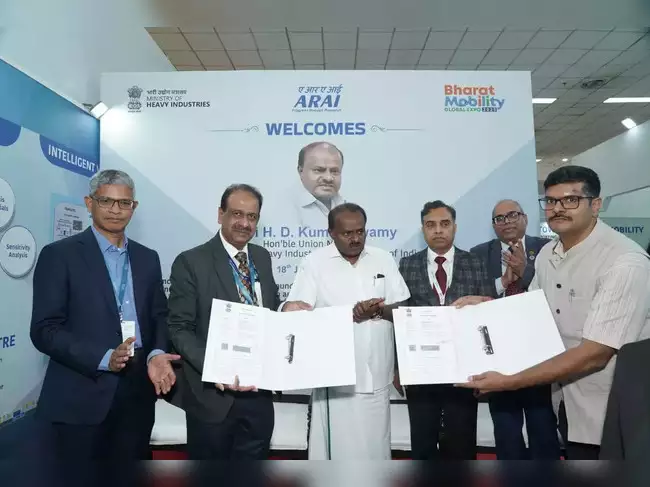India presents a promising option for diversifying manufacturing, but requires a reliable metals market with dependable benchmarks, effective price discovery, and accessible hedging. India can seize the opportunity to become a key player in global manufacturing, thereby fulfilling its ‘Make in India’ vision
As global trade dynamics evolve, India has a unique opportunity to become a key player in manufacturing. Rising US-China trade tensions may prompt international companies to diversify their supply chains, creating an opening for “Make in India.” India needs a robust manufacturing ecosystem supported by a well-developed metal derivatives market to seize this moment. Metals like aluminium, copper, and steel are essential for infrastructure, renewable energy, and automotive industries. An efficient metals market is crucial.
The 2018 regulatory shift introduced a delivery mandate for metal derivatives to link futures markets to the real economy. However, it led to decreased trading volumes, inefficient price discovery, and higher transaction costs, hampering market effectiveness. India should consider developing the domestic warehousing sector, negotiable receipts, and bank participation to help build competitive, scalable manufacturing operations practices.
Changing Trade Landscape
Global firms seek alternatives to China due to trade barriers, escalating costs, and logistical challenges. With its expanding industrial base and youthful workforce, India presents a promising option for diversifying manufacturing. However, for India to establish itself as a manufacturing giant, it requires a metals market that offers dependable benchmarks, effective price discovery, and accessible hedging for manufacturers and suppliers. Introduced in 2017, India’s metal derivatives market aimed to fulfil these requirements, which led to unintended complications. Trading volumes plummeted, with some metals experiencing an 80% decrease as speculative traders withdrew, resulting in reduced liquidity. Consequently, India’s market became dependent on infrequent value chain participants, which increased bid-ask spreads, raised transaction costs, and hindered efficient price discovery.
Lessons from Global Markets
A financially settled market draws various participants, supporting risk management and ensuring transparent price discovery. Global benchmarks like the London Metal Exchange (LME) and Shanghai Futures Exchange (SHFE) show how these contracts can enhance the metals market. Both exchanges allow optional delivery within a strong infrastructure, promoting liquidity through an optimal mix of speculative and hedging interests.
The LME offers a global metal price benchmark via contracts with robust financial participation, easing constraints arising from physical settlement. The SHFE, while focused on delivery, uses financial contracts to meet China’s market needs, ensuring flexibility and effective price discovery. These exchanges demonstrate that flexible settlement methods are vital for building a resilient metal market supporting large-scale manufacturing.
Returning to financially settled contracts in India could increase liquidity, narrow bid-ask spreads, and reduce transaction costs. This approach would facilitate access for speculative traders, further enhance liquidity, and provide advantages to all participants by better reflecting genuine supply and demand dynamics.
India’s Manufacturing Intensity
India’s manufacturing sector has been growing steadily, with high demand for metals from the automotive, infrastructure, and renewable energy sectors. According to estimates, India’s trade intensity in metals, or the ratio of imports and exports to total consumption, could rise from 25% to 40% over the next decade. This increased trade intensity, driven by industrialisation and demand from emerging sectors like electric vehicles, means that India’s manufacturing base is sensitive to global price changes and needs a reliable, liquid metal derivatives market to hedge against price volatility.
A financially settled model would better suit India’s evolving manufacturing landscape. It would provide access to efficient hedging instruments, avoiding the logistical burdens of physical delivery. Financial contracts would give manufacturers greater predictability over costs, helping them plan around a more stable pricing structure and fostering confidence.
Warehousing and Financial Sector Participation
Ecosystem support is essential for a financially settled metals market to thrive in India. A system of warehousing standards, quality controls, and negotiable receipts would underpin the market’s integrity, enabling financial participants to engage. Reliable warehousing is critical for physical markets because it provides a secure infrastructure to support deliveries when they occur. Still, it’s equally valuable in a financially settled market because it allows flexibility in settlement.
Bank participation is crucial in the metals market. In established exchanges like the LME and SHFE, banks accept warehouse receipts as collateral, enhancing market liquidity. This financial backing allows metal producers/users access to credit. In India, incorporating banks into the metals ecosystem could broaden market liquidity and financing options. Moreover, implementing a framework for negotiable receipts would simplify the trading process, allowing participants to settle trades without the complications of transporting physical metals, thus aligning more closely with global norms.
Additionally, a financially settled system with robust and independent forecasts and data analytics from financial players can offer participants valuable insights into market trends, improving their risk management capabilities. Such market intelligence plays a critical role in price discovery. By fostering this support network, India’s metal market can create a more liquid and efficient environment.
Path to Manufacturing Competitiveness
As the US and Europe intensify their stance on reducing reliance on China, India has a unique chance to position itself as a vital link in the global supply chain. By creating a flexible, accessible, and competitive metal derivatives market, India can seize this shifting momentum and become a reliable manufacturing partner for economies seeking alternatives to China. Reintroducing financially settled contracts would bring speculative liquidity back to India’s metal market, tightening bid-ask spreads, lowering costs, and making price discovery more efficient—all essential for attracting global manufacturing investments.
This opportunity involves more than merely adjusting derivative contracts; it necessitates a strong warehousing sector, negotiable receipts, and proactive engagement from banks and financial institutions to establish a forward curve. Such enhancements would fortify India’s metal ecosystem, enabling manufacturers to manage costs in a fast-changing trade landscape. This combined strategy—financially settled contracts and solid market infrastructure—could elevate India from a price taker to a price setter, providing the competitive advantage required to increase its share of global manufacturing.
By aligning its metal markets with global practices and integrating deeply into the international supply chain, India stands poised to benefit from the reshuffling of trade dynamics. This moment, fuelled by the US’s shift in trade policy towards “China+1”, offers India a strategic opportunity to fulfil its “Make in India” vision and emerge as a world-class manufacturing and trading hub.



